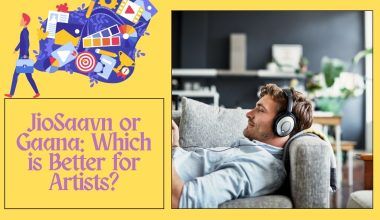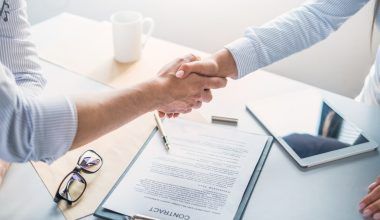The music industry is vast. One of the most critical aspects for artists is understanding royalties. Types of royalties are payments that musicians, songwriters, and rights holders receive for their work. These payments come from various sources, including streaming services, radio airplay, public performances, and more. In this guide, we’ll explore the different types of royalties, their importance, and how they impact an artist’s income.
Table of Contents
- Introduction to Royalties
- Mechanical Royalties
- Performance Royalties
- Synchronization Royalties
- Print Music Royalties
- Digital Royalties
- Neighboring Rights Royalties
- Grand Rights Royalties
- Importance of Understanding Royalties
- How Royalties are Collected and Distributed
- Maximizing Your Royalties
- Common FAQs About Royalties
- Glossary of Terms
Introduction to Royalties
Royalties are payments made to artists, songwriters, and rights holders when their music is used. These payments are a primary source of income for many in the music industry. Understanding the different types of royalties and how they are collected is crucial for anyone looking to succeed in music.
Why Are Royalties Important?
Royalties ensure that creators are compensated for their work. They provide a continuous income stream as long as the music is being played, sold, or used. This is vital for the sustainability of an artist’s career.
Mechanical Royalties
Mechanical royalties are payments made to songwriters and their publishers when a copy of their song is made. This includes physical copies (like CDs and vinyl), digital downloads, and streaming.
How Are Mechanical Royalties Collected?
In many countries, mechanical royalties are collected by organizations known as mechanical rights societies. In the United States, the Harry Fox Agency is a significant player in this area.
Example
When a song is downloaded from iTunes, the songwriter earns a mechanical royalty for that download.
Performance Royalties
Performance royalties are earned when a song is played publicly. This includes radio, TV, live venues, and streaming services.
How Are Performance Royalties Collected?
Performance royalties are collected by Performance Rights Organizations (PROs) such as ASCAP, BMI, and SESAC in the United States, or PRS in the UK.
Example
When a song is played on the radio, both the songwriter and the publisher earn performance royalties.
Synchronization Royalties
Synchronization royalties (or sync royalties) are paid when music is used in conjunction with visual media. This includes movies, TV shows, commercials, and video games.
How Are Synchronization Royalties Collected?
Sync royalties are usually negotiated directly between the rights holder (or their representative) and the party seeking to use the music.
Example
When a song is used in a movie soundtrack, the rights holder earns a synchronization royalty.
Print Music Royalties
Print music royalties are earned from the sale of sheet music. These royalties go to the composer and publisher.
How Are Print Music Royalties Collected?
These royalties are typically collected by the publisher who then pays the songwriter/composer.
Example
When sheet music for a song is sold, the songwriter earns a print music royalty.
Digital Royalties
Digital royalties are earned from music played on digital platforms like Spotify, Apple Music, and YouTube.
Types of Digital Royalties
- Interactive Streaming Royalties: Earned from platforms like Spotify where users can select songs on demand.
- Non-interactive Streaming Royalties: Earned from services like Pandora where users cannot choose specific songs.
How Are Digital Royalties Collected?
Digital royalties are collected by various entities, including digital aggregators, PROs, and mechanical rights organizations.
Example
When a song is streamed on Spotify, both performance and mechanical royalties are generated.
Neighboring Rights Royalties
Neighboring rights royalties are payments to performers and producers for the use of sound recordings in public performances and broadcasts.
How Are Neighboring Rights Royalties Collected?
These royalties are collected by neighboring rights organizations like SoundExchange in the United States or PPL in the UK.
Example
When a song is played on satellite radio, the performers and producers earn neighboring rights royalties.
Grand Rights Royalties
Grand rights royalties are associated with the performance of a musical work in a dramatic setting, such as a musical or opera.
How Are Grand Rights Royalties Collected?
These royalties are usually negotiated directly with the theater company or production.
Example
When a song is performed in a Broadway musical, the composer earns a grand rights royalty.
Importance of Understanding Royalties
Understanding royalties is crucial for artists and musicians because it directly impacts their income. Knowing the different types of royalties helps artists ensure they are receiving all the money they are entitled to.
Benefits of Understanding Royalties
- Increased Income: By knowing where to collect from.
- Better Negotiations: Artists can negotiate better deals when they understand their worth.
- Career Sustainability: Ensures a continuous income stream.
How Royalties are Collected and Distributed
Royalties are collected and distributed by various organizations depending on the type of royalty. These include PROs, mechanical rights organizations, and digital aggregators.
Key Organizations
- ASCAP, BMI, SESAC: Performance Royalties
- Harry Fox Agency: Mechanical Royalties
- SoundExchange: Neighboring Rights Royalties
- Music Publishers: Print and Sync Royalties
Maximizing Your Royalties
Tips for Artists
- Register with PROs and Mechanical Rights Organizations: Ensure all your works are registered.
- Monitor Your Plays and Uses: Keep track of where your music is being played.
- Negotiate Good Sync Deals: Don’t underestimate the value of synchronization royalties.
- Use Digital Aggregators: To ensure your music is available on all streaming platforms.
Tools and Resources
- Royalty Accounting Software: Helps track and manage royalties.
- Music Distribution Services: Ensure your music is widely available.
- Legal Advice: Consider hiring a music attorney to help with contracts and rights management.
Common FAQs About Royalties
Q1: What is the difference between mechanical and performance royalties?
A1: Mechanical royalties are paid for reproducing a song, while performance royalties are paid for publicly playing a song.
Q2: How often are royalties paid out?
A2: This varies by organization, but typically royalties are paid out quarterly.
Q3: Can an artist earn multiple types of royalties for a single song?
A3: Yes, a single song can generate multiple types of royalties, including mechanical, performance, and digital royalties.
Q4: What is a Performance Rights Organization (PRO)?
A4: A PRO collects performance royalties on behalf of songwriters and publishers.
Q5: How do I know if I am missing out on royalties?
A5: Regularly check with your PRO, mechanical rights organization, and digital aggregator to ensure all your works are registered and accounted for.
Glossary of Terms
Mechanical Royalties: Payments for reproducing a song.
Performance Royalties: Payments for publicly playing a song.
Synchronization Royalties: Payments for using music in visual media.
Print Music Royalties: Payments for the sale of sheet music.
Digital Royalties: Payments from digital platforms.
Neighboring Rights Royalties: Payments to performers and producers for public performance of sound recordings.
Grand Rights Royalties: Payments for performing music in dramatic works.
PRO (Performance Rights Organization): An organization that collects performance royalties.
Digital Aggregator: A service that distributes music to digital platforms.
Understanding royalties is essential for any artist or musician. By knowing the different types of royalties and how to collect them, you can ensure that you are fairly compensated for your work. This guide provides a thorough overview of the royalties landscape, offering valuable insights and tips to maximize your earnings and sustain your music career.
For further reading, explore these related articles:
- What is YouTube Content ID?
- Deliver My Tune’s Exciting New Services!
- Know the Ways to Get the Music Sync Licensing
- What is Performance Royalty?
- What is Sync Royalty?
For additional resources on music marketing and distribution, visit Deliver My Tune.






